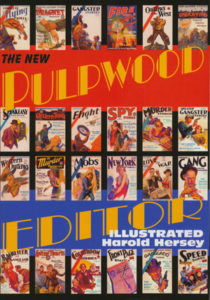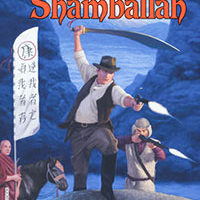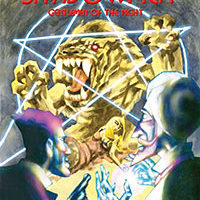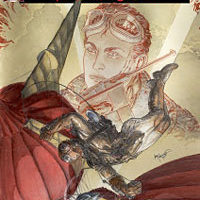 Harold Hersey (1893-1956) was a long-time pulp editor and publisher, probably best known for establishing Magazine Publishers, which after he left became the heart of Ace Publications. He was a major figure in creating the gangster pulp genre.
Harold Hersey (1893-1956) was a long-time pulp editor and publisher, probably best known for establishing Magazine Publishers, which after he left became the heart of Ace Publications. He was a major figure in creating the gangster pulp genre.
Some may know of him due to his published reminiscence of the pulp world: Pulpwood Editor (1937), which is still available today in an “expanded edition” from Adventure House titled The New Pulpwood Editor (2002). This expanded edition has many of his pulp covers (in black and white), as well as an appendix of the publications he was involved in.
As to his career, Hersey entered the pulp work as the editor for Street & Smith’s new Thrill Book pulp. Meant to be for more unusual works, a combination of fantasy and adventure, it wasn’t successful, and Hersey left, after which it soon ended. He moved to Clayton and built up their line. This include Ranch Romances, the western-love pulp that lasted until 1971(!), as well as Ace-High and Clues.
Next, he got involved with Bernarr Macfadden, the “father of physical culture.” With Macfadden, he published a line of semi-pulp/semi-slick “True” magazines, True Story, True Romances, etc. But that was short-lived, and he was soon at Magazine Publishers, and put out the original “Hersey Pulps” marked with a swastika. While only there a short time, he developed Dragnet Magazine, which later became Ten Detective Aces, as well as several other unusual but short-lived pulps. Magazine Publishers is probably better known as Ace Magazines, though that was under others.
At this point he went to Good Story, which was backed by Macfadden. Here he published several pulps, including various “gangster” pulps, which sold well, though many were upset by them. These included Gangland Stories, Gangster Stories, Murder Stories, Prison Stories, and Racketeer Stories. These were marked by a diagonal blue or red strip on the covers.
The end of Prohibition put an end to the gangster genre, the Great Depression killed off Good Story, and Hersey moved on. Several times. There was the short attempt at creating pulps from comic-strip characters, like Dan Dunn and Flash Gordon that I previously covered, and several other publishers afterwards.
At this point, in 1937, he wrote Pulpwood Editor, which was his personal guide to pulp publishing. It speaks of the readers, the editors, and writers of the pulp world. Each chapter is focused on a different topic, so you can skip around or read it straight through. One looks at the creation of a pulp magazine. Another looks at advertising in the pulps. “Is it pulp or not” is a common refrain in fandom, and one chapter looks at pulps magazines that where published on non-pulp paper. Sex in the pulp is another topic that is covered in another chapter, which some may find funny looking back on it from today.
Hersey had an interesting experience in Denver where he was hauled into court because some didn’t approve of the gangster pulps he published. You need to read it to find out what happened.
And there is the requisite chapter on writing for the pulps.
There is an excellent forward written, I think, by John Locke and John Gunnison. John Locke is a pulp researcher who has put out several collections of articles from the various writer journals and a look at the early years of Weird Tales through his Off-Trail Publications. This forward gives a good overview of Hersey’s life and career, and fills in on what he did after writing Pulpwood Editor. They also add an appendix listing all of the publishers and magazines Hersey was involved, in chronological order. There is also an index for the book.
It is interesting that while many may be aware of Hersey, he never achieved the success of the big pulp publishing houses. He had a few short-term successes, but just plugged along as an average editor/publisher as compared with Street & Smith, Popular, Thrilling, Munsey, etc.
If you like reading the various works by the authors and editors of the pulp world, this is an excellent addition to that. Adventure House still has copies, but not too many. So get it now.




Your comments